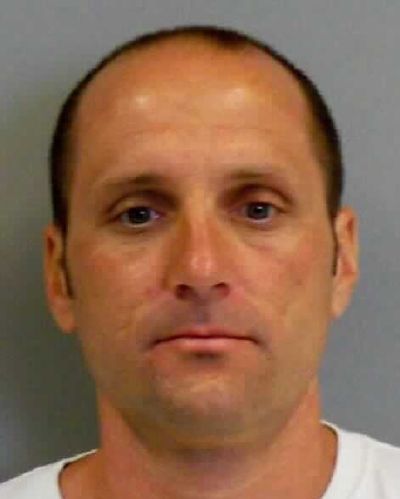Recording lends insight into Wallace’s release
Wrist, risk were at issue in hearing

Five weeks before Charles Robert Wallace shot two Spokane County sheriff’s deputies, he sat in a federal courtroom in downtown Spokane, his hand in a cast, as his lawyer told a judge he needed drug addiction treatment instead of jail.
The 41-year-old suspected heroin trafficker’s wrist had been broken in a fall at the Spokane County Jail, and it took five days to get it set in a cast.
“It’s been a pretty painful and pretty difficult couple of weeks,” Wallace’s federal public defender, Jaime Hawk, said during the May 10 hearing as she urged U.S. Magistrate Judge Cynthia Imbrogno to allow Wallace to leave jail for drug rehab.
“He can’t leave there. He’s not a danger to the community and will be engaging in the needed substance abuse treatment,” Hawk said.
Although the prosecutor handling the case objected and noted Wallace’s criminal history and past record of ignoring promises to return to court, Imbrogno eventually agreed.
On June 19, Wallace shot Deputies Matt Spink and Mike Northway during a traffic stop, then led law enforcement on a high-speed chase that ended near Deer Park when Wallace shot himself.
In the days following the shooting, public outrage focused on Imbrogno’s decision to release Wallace from jail, including a rare rebuke from Sheriff Ozzie Knezovich. But as questions swirl around why Wallace was not behind bars, Imbrogno and the lawyers present at the hearing have refused to discuss what led to the judge’s ruling.
A 10-minute audio recording of Wallace’s May 10 court appearance, obtained by The Spokesman-Review, provides some of the only information to date about what led to Wallace’s release.
Wallace appeared before Imbrogno after he was arrested on the federal heroin indictment on April 24.
During the hearing, the recording shows, Imbrogno asked for court officials to prepare a report on Wallace that details his ties to the community and other personal information. She reviewed a report on Wallace conducted by a Spokane drug rehab assessment center over two to three days, which recommended he undergo intensive treatment for his drug addiction.
The contents of the reports are sealed to the public.
Imbrogno also warned Wallace of the consequences should he fail to comply with the conditions of his release.
“If I have to revoke you that can really hurt you down the road if this matter goes to penalty stage. So you need to be very serious about addressing these matters,” she said.
“Yes. Thank you, your honor,” Wallace said. He said nothing else during the hearing.
Hawk told Imbrogno that Wallace “was in a great deal of physical pain” after breaking his wrist in a fall. She did not say which wrist.
“It’s been a pretty rough couple of weeks at the Spokane County Jail on lockdown,” she said. “We respectfully submit that the locked down inpatient treatment facility is appropriate.”
Assistant U.S. Attorney Matt Duggan opposed Wallace’s release. An assessment by court officials recommended he stay behind bars, and Duggan reminded Imbrogno that Wallace had failed to appear for past court cases several times.
“There’s also a prior conviction for an escape and there are prior drug and alcohol convictions,” Duggan said. “Based on that, the United States believes there’s a flight risk as well as a potential danger to the community in this case.”
As for Wallace’s broken wrist, Duggan said he and Hawk had discussed it but reiterated his opposition to Wallace’s release.
“It’s the United States’ position that the treatment facility does not provide the level of security that’s needed to reassure Mr. Wallace’s reappearance in court,” Duggan said.
But he did not appeal Imbrogno’s decision to release him. He also did not call witnesses to testify about Wallace’s flight risk and potential danger to the community, which prosecutors have the ability to do and defense lawyers say is common.
Duggan has not returned phone calls seeking comment.
U.S. Attorney Mike Ormsby said his office disagreed with Imbrogno’s decision to release Wallace, but said prosecutors don’t appeal every decision they oppose. He said he can’t comment further on the case because it’s ongoing.
Imbrogno approved Hawk’s request May 25, and the U.S. Probation Office on May 31 transported Wallace to American Behavioral Health at 12715 E. Mission Ave. in Spokane Valley. The facility is locked to prevent strangers from accessing the facility, but patients can leave at any time. Employees cannot stop them. Their participation, though it may be court-approved, cannot be forced.
It’s unclear when Wallace left the rehab facility and when authorities began looking for him. Court documents supporting rendering criminal assistance charges against an associate of Wallace, Robert Lee “Bo” Ruth, say Wallace escaped on June 3, but it wasn’t reported to authorities until a probation officer stopped by the facility on June 5.
But in the same document, members of the Spokane Regional Drug Task Force say a confidential informant told them Wallace called him on May 31 and said he’d escaped from drug rehab and needed a ride from the area of the Spokane Valley hospital to the Deer Park area.
Imbrogno issued a warrant for Wallace’s arrest on June 8.